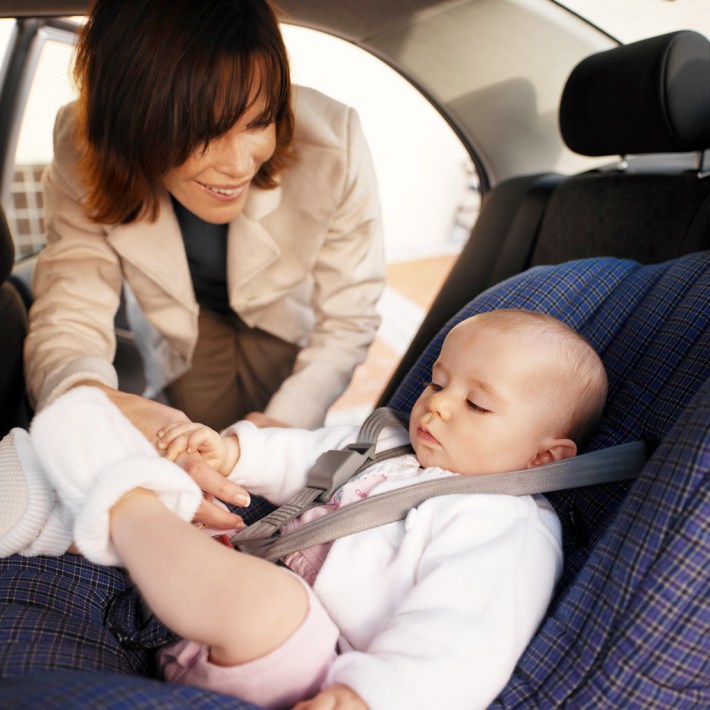Gerontologists in a laboratory at the University of Southern California exposed a group of mice to the same atmospheric conditions that humans encounter when driving along the freeway. Horrifyingly, they discovered that the mice’s brains showed the kind of swelling and inflammation associated with diseases such as Alzheimer’s. The researchers didn’t super-dose to get these results: the mice were exposed to freeway air for the equivalent of 15 hours a week -- less than the 18.5 hour average Americans spend in their cars. Jokes aside about getting those darn mice off the road, the study suggests that driving less can reduce our risk of brain damage.

For decades, Americans have been hearing about the dangers of air pollution, much of which derives from our fleet of vehicles. Yet as the body of research has grown, clarifying just how damaging automobiles are to human health and the environment, we’ve persisted in spending an astounding amount of time in cars. As a nation, we drove three trillion miles last year. We have developed responses designed to treat symptoms of the underlying ailment, like keeping children indoors when the local ozone level triggers “code red” or “code purple” alerts. But as a whole, we have not responded to the everyday contamination of our bodies by driving less.
Most of us feel powerless to affect air quality. Many feel trapped by the built environment and unable to cut down on driving. Plenty also see no point in changing their behavior when “everyone else” is going to drive as much as they wish to. It’s unsurprising then that news about pollution is brushed aside—as is news about other ills caused by driving, including crash fatalities and injuries, stress, and obesity.
The UCLA mouse study joined other recent reports that highlight the variety of ways in which remaining overly reliant on the private automobile is self-destructive. But these reports should also make clear that changes in individual behavior can alleviate some of the problems. Here’s just a sampling:
- Sitting for long stretches greatly increases the risk of heart disease – even if you exercise afterwards – according to a study in the Journal of the American College of Cardiology. It may come as no surprise that sitting isn’t good for your health, but what’s shocking is that the raft of articles following the study tended to ignore active transportation while advocating improbable solutions such as standing treadmill desks. What’s more practical than replacing some of our long hours planted in the driver’s seat with walking, biking, or getting by foot to public transit stops?
- While there was some good news in the American Lung Association’s 2011 State of the Air Report, as one commentator put it, it was “like getting a 53 on your math test after you got a 49 on your last one.” Half of Americans live in areas in which air quality is unhealthy. The ALA points out that the elderly, the young, and the sick are most vulnerable to the effects of pollution. And of course some of the sick—such as those suffering from asthma and heart disease—can trace the very causes of their conditions to air pollution.
- The obese are at increased risk of injury in a car crash, according to University of Michigan researcher Jonathan Rupp, and the percentage of the population that is obese is rising. The automotive press presented this as a problem faced by the industry, rather than exacerbated by it. Their answer, of course, is not to encourage more walking and biking but to push for improved safety equipment so that drivers can stay obese and stay on the road.
Meanwhile, auto industry commercials increasingly feature children, suggesting we best show our love for them when we put them into those manufacturers’ cars. But we should reject the self-serving advertising message that time spent with our families in a vehicle is quality time. In fact, the more we drive, the more our own family suffers physically and mentally.
Given that the 40 percent of all trips in urban areas are within two miles of the home and that a good number of us can choose to live closer to work, we do have the power to make our families’ lungs, hearts, brains, and waists healthier, starting today. Let’s make not strapping a child into a car seat a symbolic act of love.
Anne Lutz Fernandez, a former marketer and banker, and Catherine Lutz, an anthropologist at the Watson Institute at Brown University, are the authors of Carjacked: The Culture of the Automobile and its Effect on our Lives (Palgrave Macmillan).





